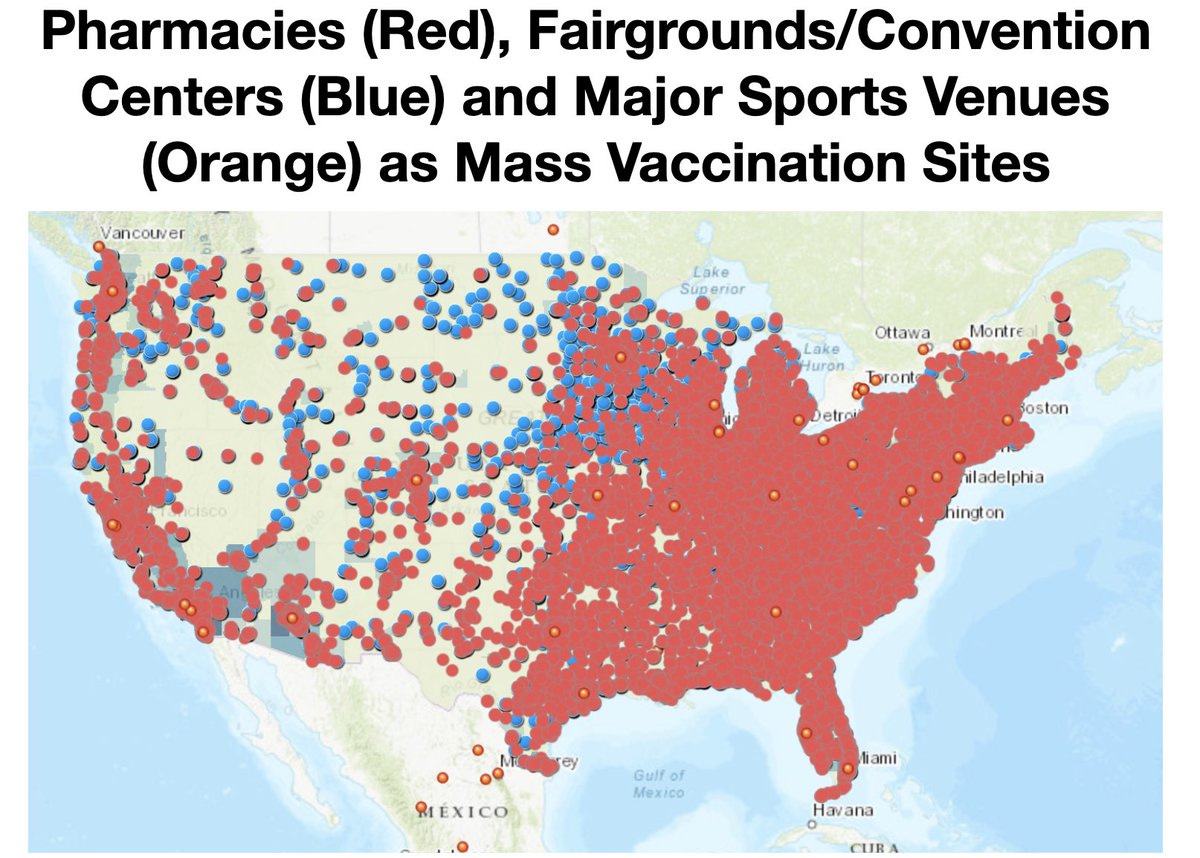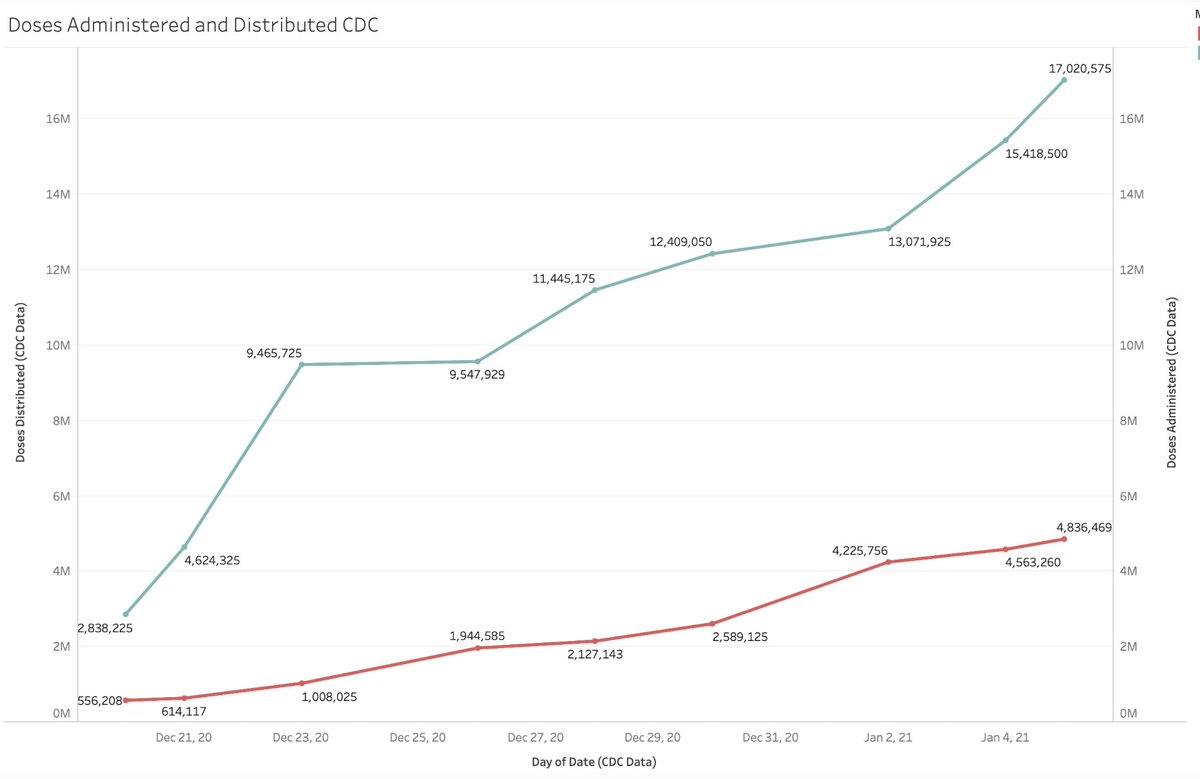
1,620,300 doses have been reported administered in the last 24 hours, according to the CDC. LA, ME, OR, UT and WY did not report doses today.
Doses Delivered: 68,285,575
Doses Administered: 46,390,270
67.9% of the doses delivered have been administered.
public.tableau.com/views/COVID-19…
Doses Delivered: 68,285,575
Doses Administered: 46,390,270
67.9% of the doses delivered have been administered.
public.tableau.com/views/COVID-19…

A new metric we will be tracking is the vaccination pace — how many new daily doses (per capita, 7-day average) each state has. Utah leads in this category, but the state reported a giant backlog earlier this week — possibly skewing the numbers. 

In 22 days, we are now 29.86% of the way to President Biden's goal of 100 million shots in 100 days. #VaccinateAmerica 

• • •
Missing some Tweet in this thread? You can try to
force a refresh














